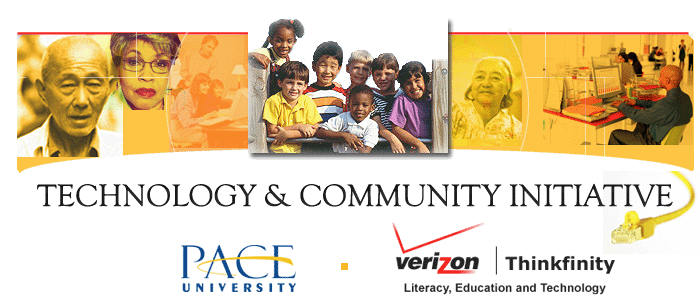Document Type
Report
Recommended Citation
Falk-Rose, Principal Investigator, Francine, "Case Studies of At-Risk Middle Grades Students and Literacy Applications Including Technology" (2011). Cornerstone 1 Reports : Expansion and Enhancements of the Thinkfinity Platform. 17.
https://digitalcommons.pace.edu/cornerstone1/17
Included in
Curriculum and Instruction Commons, Educational Assessment, Evaluation, and Research Commons, Instructional Media Design Commons, Teacher Education and Professional Development Commons



Comments
This is the final report on this Thinkfinity-funded project.
Introduction to the Profiles Report included as a Supplemental document.
See below Additional File.
Case Studies of At-Risk Middle Grades Students and Literacy Applications Including Technology
Francine Falk-Ross, Pace University, Literacy Education
According to the research focused on the ongoing middle school movement, middle grades students have very specific needs and interests, which teachers must pinpoint for effective content literacy instruction. Specifically, a consideration is that as the student population within schools becomes increasingly more diverse, in general, literacy instruction requires creative and substantive approaches to teaching for middle graders. Close readings of government initiatives and assessments (e.g., U.S. Department of Education, NCLB, 2002), national standards (e.g., International Reading Association, 2003; NMSA, 2005) and educational statistics (NAEP, Perie & Moran, 2005) mandate that we consider students’ individual learning needs that stem from cultural and linguistic diversity. This is especially important for the increasing number of schools in which language difference is a factor in learning (Brown, 2007; Garcia, Jensen, & Scribner, 2009).
Learning more about the variety of interests, attitudes, and competencies that characterize struggling middle graders is an important endeavor! There is a large Middle School Movement that continues in research circles and school initiatives to educate teachers to specifically work with this group of young adolescents who have specific cognitive, social-emotional, and psychological/social/motivational needs due to maturational experiences (Middle Level Educational Research SIG of AERA, www.rmle.pdx.edu; National Forum for Middle Grade Reform, www.mgforum.org; National Middle School Association, www.nmsa.org). Teachers need to become familiar with the characteristics of students with cultural and linguistic differences, including those with learning disabilities, so they may anticipate underlying challenges that may be hidden by fluent reading or marginalized behaviors (i.e., lack of participation which often serves for evaluation).
One method of learning more is through analysis and problem solving through case studies. Case studies include specific and deep information about individual students (Stake, 1995; Yin, 2009), and allow preservice and practicing teachers resources with which to discuss options and opportunities for assessment and instruction in classrooms. In the following six profiles of middle grades students who struggle with literacy achievement for various reasons, a representative set of difficulties that might characterize a student’s challenge with specific obstacles will be presented. The profiles are not meant to be stereotypical; they provide data to consider and analyze for critical thinking about serious educational strategies. As you read this profile, range of diversities will be presented, such as children with learning disabilities, speech/language difficulties, linguistic differences, cultural minority status, social-emotional challenges, and writing problems. A variety of literacy elements will be the focus of assessment and instruction, such as those determined by the National Reading Panel (2000) including reading comprehension, vocabulary, listening skills, word identification, fluency, and writing.
Each case study will include a description of the results of an informal test of the interests and attitudes of the student toward reading (i.e., Adolescent Motivation to Read Interview and Survey, 2007), social and family background information, and comments from a discussion of results of a running record (i.e., examples of the students reading with marks to indicate the errors/miscues and comprehension level) of the student’s read aloud performance. The leveled passages for these read alouds were taken from the Analytical Reading Inventory ( 2007) This discussion is referred to as Retrospective Miscue Analysis (Goodman & Marek, 1996), and helps teachers gain feedback form students about what they were thinking as they stumbled on a particular word. Teachers were informally interviewed about their observations of the students’ participation in class discussion and the students’ observable behaviors. Specific instructional applications follow for each student. For example, technology for further assessment (e.g., online informal reading inventories or word identification tracking), and/or instruction (e.g., websites, web quests, free online book/story depositories, or software programs) will be suggested in different parts of the individual profiles.